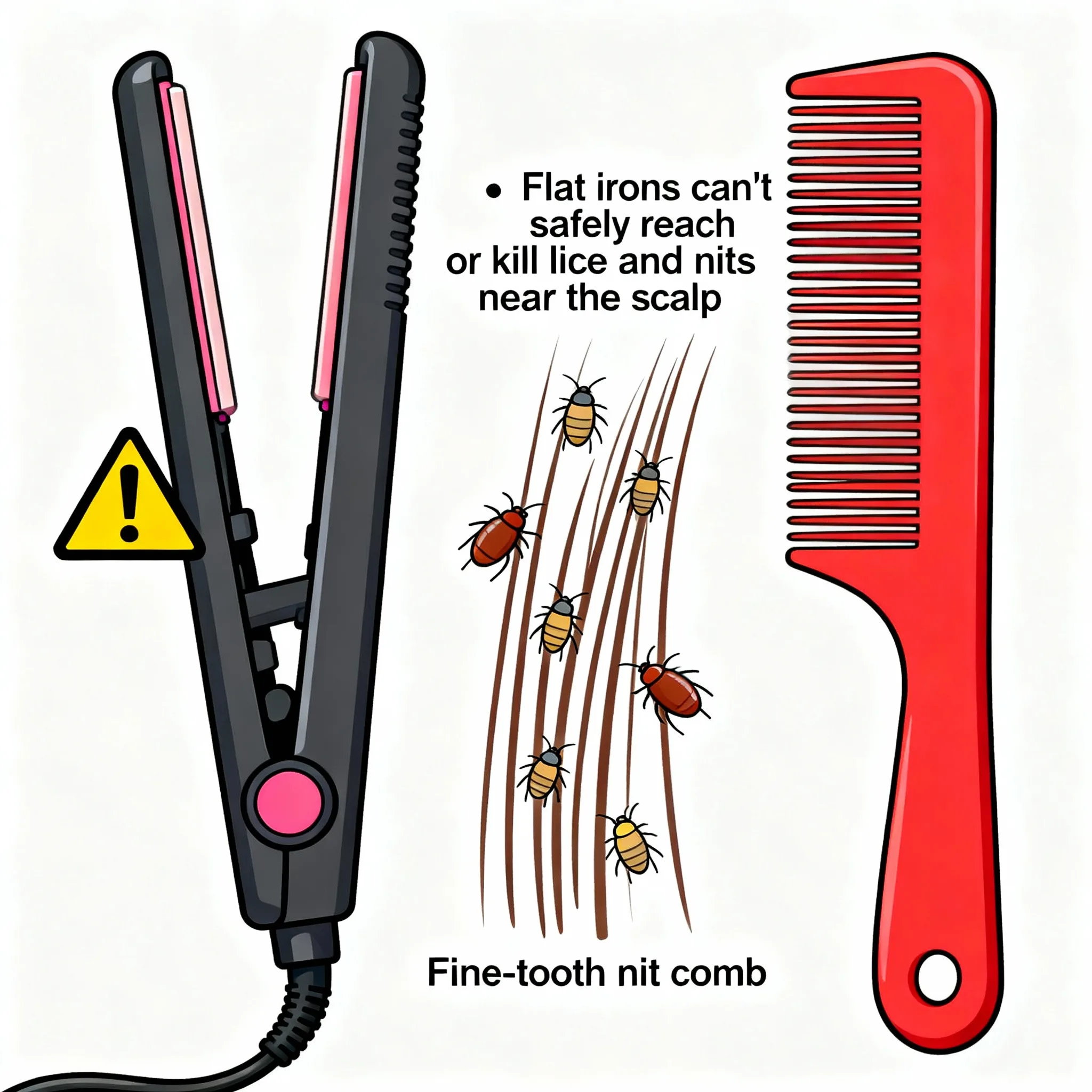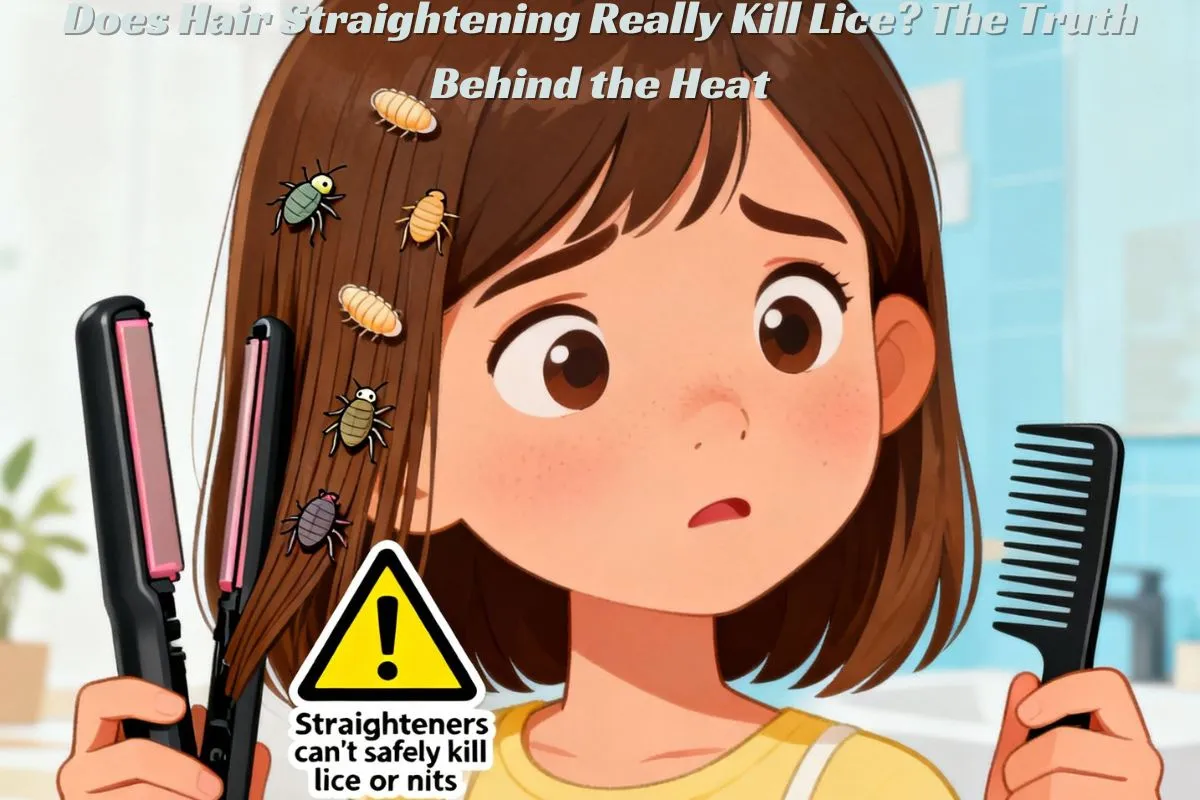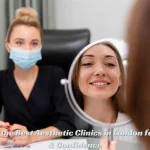Head lice are a nuisance that can turn everyday life into an itchy, stressful battle. With so many myths and home remedies online, families often wonder: “Can a hair straightener kill lice and their eggs?” As someone who’s been through back-to-school lice season with a child—and gotten frantic with a flat iron—let’s break down the truth, bust the myths, and share what actually works in a simple way anyone can understand.
Myth vs. Fact: Does Straightening Hair Cure Lice?

Many people think that the heat from flat irons (hair straighteners) is enough to fry lice and nits (their eggs). But is this really the case? The truth is more complicated.
The Myth
If lice and their eggs can’t stand high heat, then using a hair straightener—sometimes reaching 180ºC (356ºF)—ought to kill them, right? In theory, yes, the direct heat from a straightener can kill any louse or nit it touches.
The Fact
Most lice and nits survive heat because:
-
Lice move quickly. They crawl away before the straightener touches them.
-
Nits hug the scalp. Eggs attach close to the scalp, where straighteners can’t reach without burning skin.
-
Heat isn’t evenly applied. A straightener only heats the strands, not the scalp or roots where most lice and nits live.
Personal anecdote:
After my daughter came home scratching, I tried using my flat iron at the highest setting. I got a few bugs on the strands, but missed most of the nits near her scalp. We both ended up with frazzled hair and no relief!
Can a Straightener Kill Lice Eggs?
Straighteners may kill nits if they make direct contact and are left there long enough. But that’s rare:
-
Most nits are set too close to the skin for safe contact.
-
Slipping a straightener over hair won’t keep heat in place long enough to destroy eggs.
-
Miss just a few, and lice will return after eggs hatch within a week.
So, a straightener is not reliable for killing eggs.
Does Heat Kill Lice in Hair?
Scientists agree that heat above 45°C (113°F) can kill lice and their eggs. Special professional devices like the FDA-cleared AirAllé® use controlled heat and airflow to dry out lice safely and effectively. However, heat from consumer hair dryers and straighteners isn’t targeted or consistent enough to guarantee results.
-
Blow Dryers: Hot air may dehydrated some lice, but most hide by the scalp or move quickly. Plus, high heat risks burns or discomfort.
-
Straighteners: Only work if you catch lice or eggs on the strand, not when they’re hiding.
What Happens If You Straighten Hair While Having Lice?
Most people see little change except for possible hair damage:
-
Some lice might die during the styling, but most escape or survive.
-
Hair can suffer burns, dryness, and breakage from repeated high heat.
-
You risk burns to your scalp and ears if you try to reach roots.
Unique insight:
Lice are clever climbers. I tried straightening my own hair once during a lice scare, only to realize the little bugs moved from one part to another—making the job tougher!
Do Lice Prefer Straight Hair?
No—lice don’t care about hair type. They need any strand to grip and move around. Curly, wavy, or straight hair, thick or thin—the risk of lice comes from contact, not from texture or shape.
Safer, Effective Ways to Treat Lice
Instead of risky hot tools, here are proven ways to get rid of lice:
1. Nit Comb
A fine-toothed nit comb and patience remove live bugs and many eggs after treatment. Comb wet hair for best results.
2. Special Shampoos or Lotions
Medicated products designed to kill lice—follow the directions carefully. Repeat applications seven to ten days later, as recommended.
3. Natural Remedies
Some plant oils, such as tea tree oil, help but are less proven than medicated options.
4. Professional Heated-Air Devices
Clinic treatments like AirAllé® use controlled heat and airflow to desiccate lice and nits without damaging hair or skin.
Personal anecdote:
We finally found peace using a pharmacy kit and a metal nit comb—tedious, yes, but far more effective than straighteners!
Tips to Prevent Lice from Coming Back
-
Wash pillowcases, hats, and brushes in hot water.
-
Avoid sharing hair accessories during outbreaks.
-
Check family members regularly.
-
Keep hair tied up when outbreaks are common.
Busting Myths Once and For All
-
Myth: Flat irons kill all lice and nits.
Fact: They only work on bugs or eggs they contact, missing many at the scalp. -
Myth: Lice love straight hair.
Fact: They live in any hair. -
Myth: Heat is a home cure.
Fact: Heat treatments work best in clinics, not at home with styling tools.
Final Thoughts: The Real Truth Behind the Heat
Hair straighteners are not a safe or effective lice cure. Professional heat treatments and targeted lice shampoos, along with diligent combing, are the safest and most reliable options. If you’re battling lice at home, skip the risky burn-prone shortcuts and opt for science-backed solutions. Save your hair (and your peace of mind) for styles, not for fighting bugs!
Would you like instructions for effective nit comb use or product suggestions for easy, at-home lice removal?




